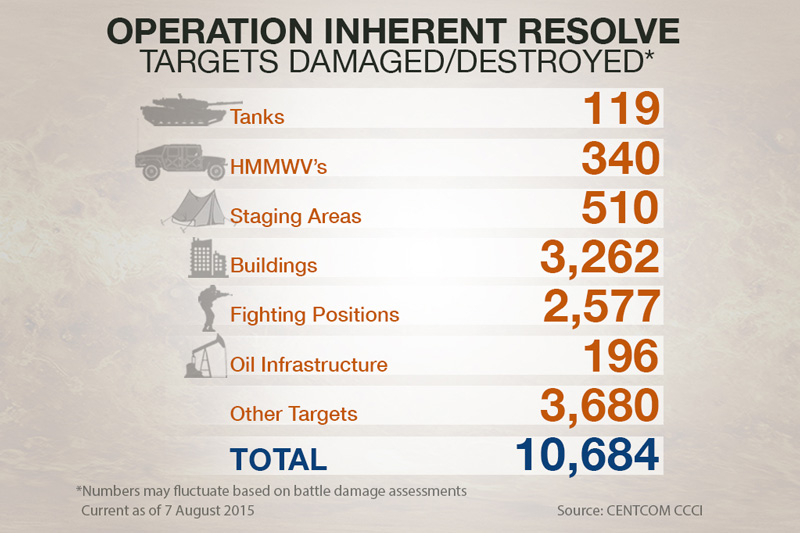WASHINGTON — The leader of the Islamic State and the Levant (ISIL), Abu Bakr al-Baghdadi, was critically wounded during a U.S.-led coalition airstrike several months ago, Iraq’s ambassador to the United States told WTOP in an exclusive interview.
“Back in February he was seriously injured,” Lukman Faily said in late August, though later, through a spokesman, he amended his statement to say, “Baghdadi was seriously injured in March.”
Faily declined to cite the exact date the strike took place, but said, “The reports [of him being wounded in an airstrike] were confirmed. As to exactly what the extent is, I’d like to keep that confidential.”
But another Iraqi official said “a coalition strike” took place in mid-March that’s believed to be the one that wounded Baghdadi and killed three men he was traveling with. The attack is believed to have taken place in al-Baaj, roughly 75 miles west of Mosul.
Unconfirmed reports emerged suggesting Baghdadi died after that strike, but U.S. military and intelligence officials told WTOP in July they had “high confidence” he was still alive.
But Faily said, “We will keep targeting Baghdadi. The allies have him as a top target. We will not rest until he and his gang of thugs, who lead ISIS and create all of this chaos and injustice are under the ground.”
WTOP reported last month that Baghdadi had allegedly survived several attempts by the coalition airstrikes to kill him between November 2014 and April 2015, but no U.S. officials would discuss the specifics, because of the classified nature of the details.
Michael Rogers, former chairman of the House Intelligence Committee, told WTOP that Baghdadi was almost killed.
“That brush with mortality allowed him to come to the conclusion [that] he’d better be more aggressive in putting people around him to survive,” Rogers said.
Rogers wouldn’t specify when and where the near-death experience happened.
“That event, how dangerously close it came to taking his life, was probably a motivator for him to change the way he’s doing his command and control,” Rogers said.
The U.S. has used a variety of weapons to launch airstrikes against ISIL targets as a part of Operation Inherent Resolve.

According to the Department of Defense (DOD), coalition military forces conducted 19 airstrikes Monday using bomber, fighter and remotely-piloted aircraft — 13 in Iraq, coordinated with the government, and six airstrikes were launched in Syria.
DOD said in releases detailing the progress of the strikes that the U.S. and coalition have conducted approximately 6,500 airstrikes since kinetic operations began on Aug. 8, 2014. More than 4,000 have been in Iraq, about 2,500 in Syria. The U.S. has conducted more than 5,000 airstrikes, including more than 2,700 in Iraq and more than 2,300 in Syria.








